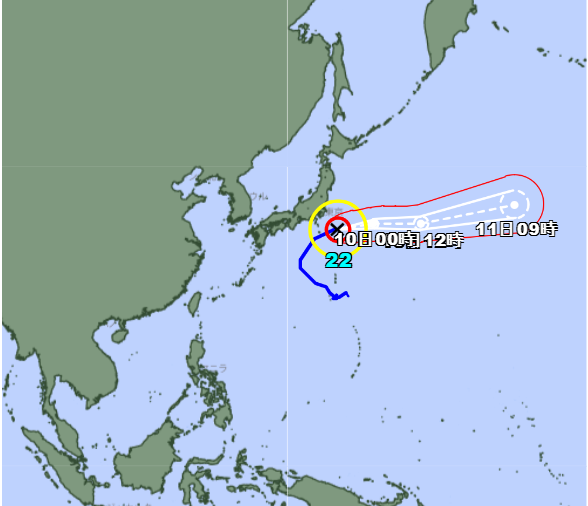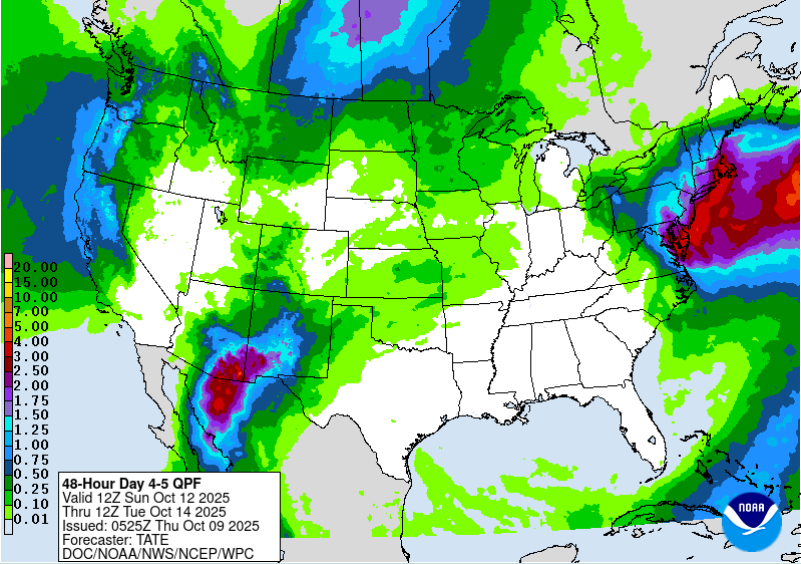Typhoon Halong is battering Japan with intense rain and winds, prompting emergency warnings and fears of flooding and landslides as meteorologists say its remnants could soon fuel an unusually strong rain and snow system across California.
The typhoon reached Japan’s Izu Islands on Thursday morning, prompting special warnings for windstorms, high waves and heavy rainfall across the island chain, including Hachijō and Aogashima, where residents have been urged to evacuate.
By noon local time, the storm was moving at around 30kmph with a central pressure of 950 hectopascals. Maximum sustained winds near the centre reached 162kmph, with maximum instantaneous wind speeds of 234kmph, according to the Japan Meteorological Agency.
Japan's weather agency issued a special heavy rain warning for the Izu island chain south of Tokyo.
Forecasters said rainfall totals could reach up to 300mm in 24 hours, with gusts exceeding 250kmph and sustained winds of around 180kmph.
According to the agency, rainfall on Hachijo in the three hours through 7am local time reached 207mm, the highest ever for the area.
The weather forced hundreds of residents in the region to take refuge at evacuation centers.

Strong winds are also expected to lash other islands in the chain, including Toshima, Niijima, Kozushima, Miyakejima and Mikurajima, raising fears of widespread power outages and transport disruptions.
Local authorities have warned of the potential for landslides and “linear rainbands” – narrow corridors of intense rainfall that can rapidly worsen flooding.
Halong is expected to pass near the Izu Islands before curving eastward over the Pacific late on Thursday, sparing mainland Japan from a direct hit but leaving severe weather conditions in its wake.
The Japan Coast Guard has urged ships to steer clear of the typhoon’s projected path, while flights and ferries to the islands have been suspended. Emergency crews remain on standby to respond to power failures and blocked roads.
But as Japan braces for the storm, the remnants of Typhoon Halong are forecast to merge with a weather system over the Pacific, intensifying the jet stream and sending a surge of moisture toward North America.
In California, that could translate into a multi-day storm bringing heavy rain to coastal and inland areas, and early-season snowfall in the Sierra Nevada.
Spectacular imagery of Typhoon Halong, churning to the south of Japan. pic.twitter.com/9YKAD4THmb
— CIRA (@CIRA_CSU) October 8, 2025
Some models suggest the Bay Area could experience its strongest rainfall since last winter, with mountain snow reaching lower elevations than usual for October.
This type of cross-ocean weather link, known as “atmospheric teleconnection”, happens when the energy and moisture of a western Pacific typhoon feed into the jet stream, amplifying downstream weather patterns thousands of kilometres away.
The storm will first move towards Western Alaska, which is bracing for impact this weekend as the remnants of the typhoon are expected to move into the Bering Sea late Sunday into Monday.

The storm's energy will strengthen the jet stream, pushing a high-pressure system into Canada and causing subarctic air to flow toward Washington state, Oregon and California on Monday.
This cold air interacting with a coastal storm system may bring substantial rainfall to Northern California, particularly around the Bay Area, and significant snowfall to the Sierra Nevada mountains.
Depending on the storm's trajectory, the Bay Area could receive its heaviest rainfall since last winter, while Lake Tahoe and the Sierras may see several feet of new snow.
Villages swept away and dozens killed as heavy rains cause flooding in Nepal
Death toll from Typhoon Bualoi, Vietnam’s deadliest storm this year, rises to 51
Typhoon Ragasa weakens in Vietnam after leaving trail of destruction across China
King’s ‘inspiring’ film about harmony with nature to hit Prime Video in 2026
More than 24,000 properties better protected from floods, Government says
Call to end overfishing to save British fish supper as key stocks face collapse







